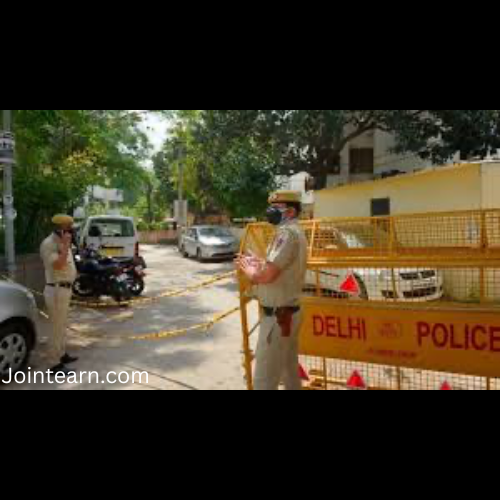Delhi, October 17, 2025: As the festive season approaches, air quality across Delhi-NCR and adjoining regions has deteriorated sharply, raising health concerns for residents. With Ghaziabad recording an Air Quality Index (AQI) of 306, categorized as ‘very poor’, the national capital region is experiencing one of its worst air pollution episodes in recent weeks. Delhi itself registered an AQI of 254 (poor), according to the latest data from the Central Pollution Control Board (CPCB).
Other areas in the region also recorded alarming pollution levels. Manesar, Noida, and Rohtak logged AQI readings of 278, while Hanumangarh recorded 266, categorizing them in the ‘very poor’ or ‘poor’ brackets. Gurugram registered 266 (poor), Hapur 265 (poor), Ballabhgarh 254 (poor), Greater Noida 246 (poor), and Faridabad 105 (moderate). These figures indicate widespread air quality concerns, with significant implications for residents’ health, especially among the elderly, children, and individuals with pre-existing respiratory or heart conditions.
Major Contributors to Pollution
Transport emissions continue to be the primary source of air pollution in Delhi, accounting for 18.7% of total emissions, according to the Decision Support System. The combination of increased vehicular movement, ongoing construction activity, and industrial emissions has compounded the problem. Authorities have indicated that no immediate improvement in air quality is expected over the next few days, as per forecasts from the Air Quality Early Warning System.
The deterioration of air quality in the capital is part of a seasonal pattern, with winter onset and stubble burning in adjoining states contributing significantly to pollution levels. This period coincides with Diwali celebrations, during which the use of firecrackers further exacerbates air pollution, adding particulate matter and toxic gases to the already compromised atmosphere.
AQI Categories and Health Impact
The Central Pollution Control Board (CPCB) uses a standardized scale to classify air quality:
- 0-50 (Good): Minimal impact on health.
- 51-100 (Satisfactory): Minor breathing discomfort for sensitive groups.
- 101-200 (Moderate): Causes breathing discomfort for people with lung, asthma, or heart conditions.
- 201-300 (Poor): Breathing discomfort for most people on prolonged exposure.
- 301-400 (Very Poor): Prolonged exposure can cause respiratory illness.
- 401-500 (Severe): Affects healthy individuals and worsens conditions for those with pre-existing diseases.
With the AQI in Ghaziabad and surrounding areas in the ‘very poor’ range, residents are advised to take precautions, including limiting outdoor activities, wearing masks when venturing outside, and using air purifiers indoors wherever possible.
Air Quality in Other Regions
Beyond Delhi-NCR, several cities across India are also witnessing poor air quality:
- Madhya Pradesh’s Pithampur – 242 (poor)
- Haryana’s Panipat – 242 (poor)
- Gujarat’s Nandesari – 228 (poor)
- Maharashtra’s Nagpur – 233 (poor)
- Uttar Pradesh’s Meerut, Khurja, Baghpat, and Bulandshahr – 228, 220, 210, and 216 (poor)
- West Bengal’s Howrah – 206 (poor)
- Haryana’s Fatehabad, Bahadurgarh, Dharuhera – 224, 213, 239 (poor)
- Rajasthan’s Bikaner, Bharatpur, and Bhiwadi – 216, 202, 236 (poor)
These readings suggest a widespread regional air quality crisis, particularly affecting northern and western India.
Public Advisory and Measures
The deteriorating air quality has prompted calls from health experts and environmentalists for residents to take precautionary measures, including minimizing outdoor exposure, using masks, and avoiding strenuous activities outdoors. The use of private vehicles should be limited, and public transportation is encouraged to reduce vehicular emissions.
Authorities and environmental bodies have also highlighted the importance of stubble burning management, pollution monitoring, and proactive civic measures to prevent further deterioration of air quality. The government is expected to step up monitoring and mitigation measures ahead of the festival to reduce pollution spikes.
Outlook for the Coming Days
The Air Quality Early Warning System indicates that Delhi-NCR may continue to experience poor air quality in the coming days, especially as Diwali-related activities increase, including firecracker use and festive traffic congestion. Experts stress the need for collective civic responsibility to reduce pollution levels and protect public health during this critical period.
As Delhi and its surrounding areas prepare for Diwali, the combination of seasonal pollution, vehicular emissions, stubble burning, and festival celebrations poses a serious challenge. Residents are urged to stay informed through AQI updates, take necessary precautions, and follow guidance from authorities to minimize exposure to hazardous air.


Leave a Reply